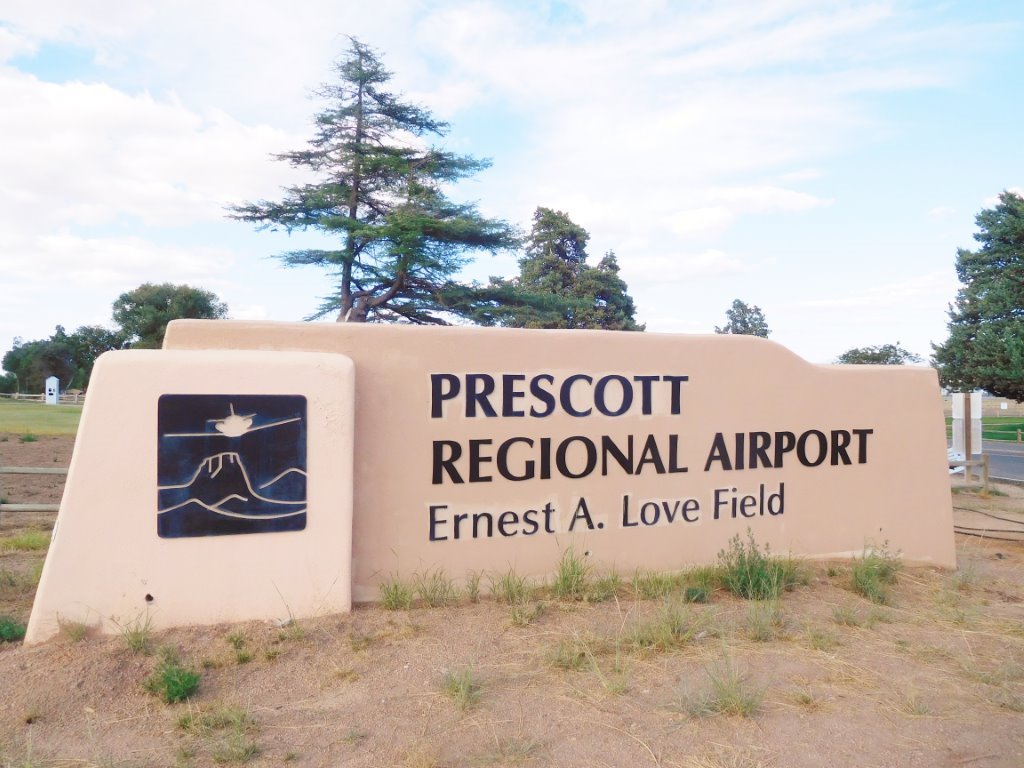Although I am brand new to Prescott and am still getting to know the wonderful people in this community, I am aware that there has been much debate and a wide range of opinions over the past few years regarding land acquisition to protect Prescott Regional Airport (PRC) from incompatible uses. In this letter, I would like to share some facts about airport protection and information specific to Prescott Regional Airport (PRC). I will also explain the difference between open space for airport protection and open space for recreational purposes.
Prescott Regional Airport continues to be a center of economic activity, connecting Prescott to the world through daily flights to Denver and Los Angeles on United (operated by SkyWest Airlines). Flight training through Embry Riddle Aeronautical University and several other flight schools continues to make up a large portion of the airport’s daily traffic. And this time of year, the U.S. Forest Service Fire Center and Tanker Base fly missions throughout Arizona and the Southwest.


As our airport grows and Prescott grows around the airport, we should be careful and strategic to ensure that development is compatible and does not jeopardize the responsible growth of these important activities. The City of Prescott has been in discussions with property owners around the airport for several years to acquire land for this purpose. Sometimes this can be a costly endeavor, and all of these actions require City Council resolutions in public meetings. In some cases, the City can be reimbursed for a portion of these costs through grants from federal (FAA) and state (ADOT) agencies.
Below I provide some background on the issue of airport protection and explain why the City of Prescott is seeking to acquire land to ensure sustainable land use and development.
Airport owners, such as the City of Prescott in PRC’s case, take steps to protect their airports and surrounding airspace from encroachment by incompatible land uses or construction that could pose safety risks or operational limitations. Here are the main reasons why airports must be protected from encroachment:


- Safety of flight operations: Interventions can cause obstacles such as buildings, tall structures or even trees to enter the airspace around an airport. These obstacles can pose a danger to aircraft taking off, landing or maneuvering near the airport. Protecting the airspace ensures that pilots have clear, obstacle-free paths during critical phases of flight.
- Noise mitigation: Airports generate significant noise from aircraft operations, particularly during takeoffs and landings. Encroachment protection helps mitigate potential conflicts with noise-sensitive land uses such as residential areas. Zoning regulations can restrict incompatible developments near airports to reduce disturbances and promote peaceful coexistence.
- Operational flexibility: Airports need sufficient space to expand, build new facilities and implement security measures. Encroachments limit this flexibility as they restrict the area available for airport operations and future growth. Protecting airport boundaries ensures that sufficient land is available for current and future aviation needs.
- Aviation Compliance: The Federal Aviation Administration (FAA) mandates airport protection through regulations and policies. These regulations define specific zones around airports where the airport sponsor enforces altitude restrictions and compatible land use controls to ensure flight safety and operational efficiency.
- Economic considerations: Airports are important economic drivers that support regional development, job creation and tourism. Protecting airports from interference helps maintain their economic contribution by preserving their ability to operate efficiently, expand when needed and maintain competitiveness within the aviation industry.
Overall, airport protection aims to balance the need for safe and efficient flight operations with the use of the surrounding land and the interests of the population. Through effective planning, zoning regulations and coordination between stakeholders, airports can mitigate the risks associated with encroachments while supporting sustainable development and economic growth in their respective regions.
There is a clear difference between acquiring land to protect and develop airports and acquiring land for open space and recreational activities. I have set out the rationale for acquiring land to protect airports over incompatible land uses.
Acquiring land for open space, conservation and recreation and spending city funds on it is equally valid. Prescott citizens clearly value open space for recreation as it improves the quality of life. In fact, Prescott has acquired thousands of acres of open space over the past two decades. For example, in 2023 the city entered into an intergovernmental agreement (IGA) with Prescott Valley and Yavapai County to acquire land on and around Glassford Hill for this very reason.
The decision to spend taxpayer money on conservation and recreation is made on very different criteria than airport protection, which is more about compatible development and possible future expansion. Although both types of land acquisition are political decisions made by our elected politicians, both have different criteria and justifications.
In closing, there is a good argument for protecting PRC from incompatible land uses. When the City has the opportunity to leverage state and federal investments while protecting and growing a key economic catalyst in our community, the case for the City investing in its airport is even more compelling. Open space for conservation and recreation can also be considered good policy, and in both cases, these decisions are made by our elected leadership, informed by the community they serve.



